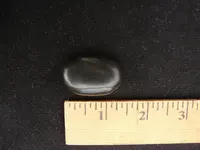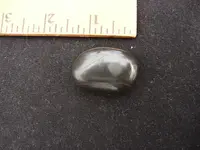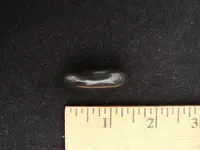By definition, manuports consist of items transported to sites as raw materials, but which were not themselves altered for use as tools. Our New England artifact guide lists, among such objects, "magic stones", which are unmodified, and include quartz crystals and other crystals, gastroliths or gizzard stones, or other oddly shaped or colored stones that might be rarely encountered on a site. Fossils are another example of a manuport when found on sites.
Technically, you can really only be sure such objects were transported to a site by humans if found during excavation and in direct association with known artifacts.
However, if a collector knows his/her site really well, like the back of their proverbial hand, so to speak, they may more easily recognized such an object as being very much out of place, based on their considerable experience with the site where found.
Although it cannot be proven with surface found manuports, such colorful stones and similar objects are often interpreted as "magic stones", and when that is the case, they are often interpreted as objects that were part of a shaman's medicine kit. This is entirely a reasonable suggestion, even if always essentially unprovable. I have one site, hardly any rocks present, which is a rare situation for a New England field, where I have found both fossils and highly polished, colorful pebbles. I easily recognized their out of place nature on a site I know like the back of my hand after walking it for 25 years. I am very comfortable seeing them as coming from a shaman's medicine kit. These are calls experienced collectors may make regarding such surface finds. When you know a site well enough, you can make such calls with some degree of confidence. IMHO.....







